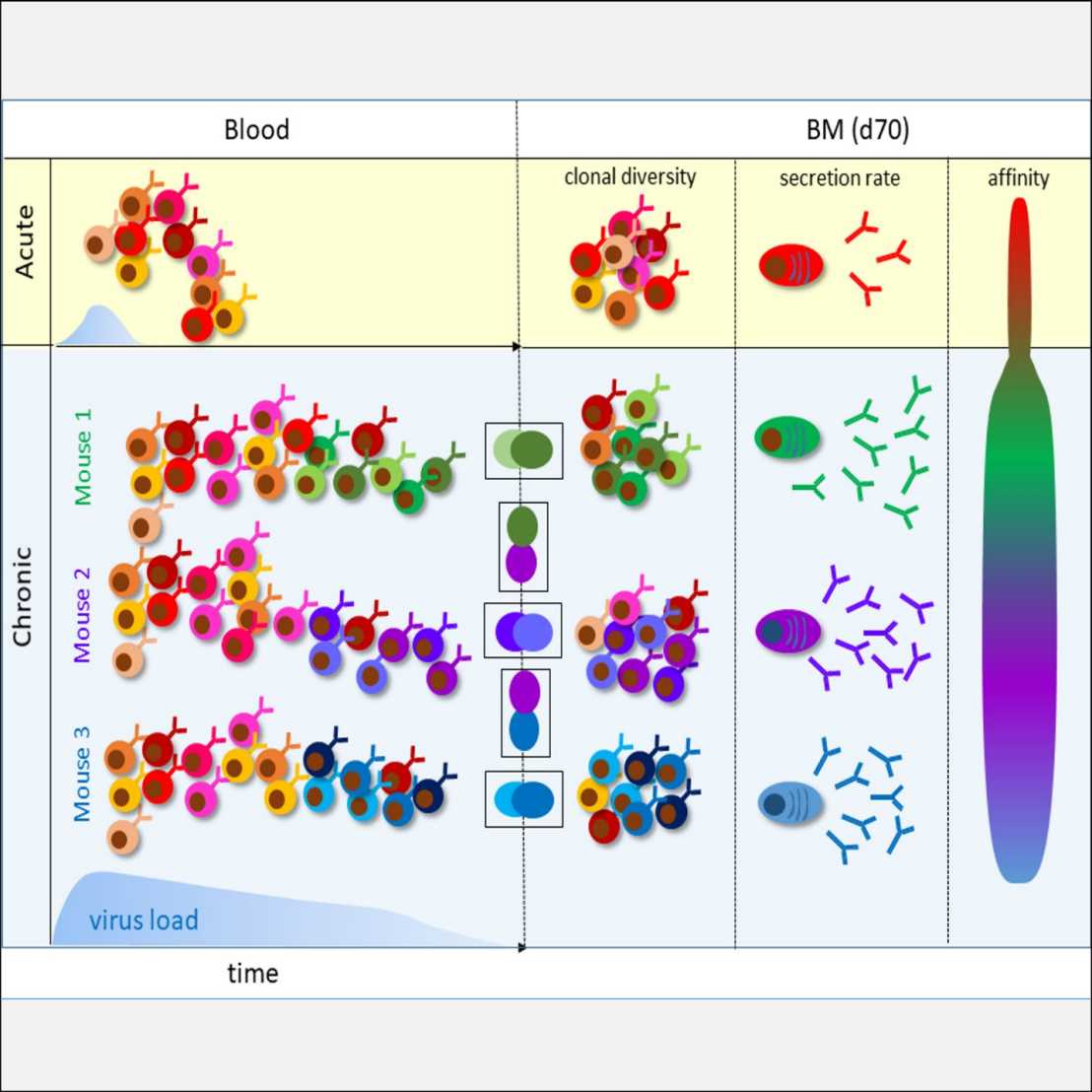New Cell Reports Paper by the Oxenius Lab
Quantitative and Qualitative Analysis of Humoral Immunity Reveals Continued and Personalized Evolution in Chronic Viral Infection
Nike Julia Kräutler, Alexander Yermanos, Alessandro Pedrioli, Suzanne P.M. Welten, Dominique Lorgé, Ute Greczmiel, Ilka Bartsch, Jörg Scheuermann, Jonathan D. Kiefer, Klaus Eyer, Ulrike Menzel, Victor Greiff, Dario Neri, Tanja Stadler, Sai T. Reddy, Annette Oxenius
Cell Reports 28 Jan 2020, DOI: 10.1016/j.celrep.2019.12.088

During established chronic viral infections, tailored virus-specific antibody responses can promote its eventual control. The extent to which the ensemble of antibodies has to evolve to this end during chronic infection is unclear. A collaborative "Cell Reports" paper by the Oxenius (IMB), Reddy and Stadler (D-BSSE) groups sheds light on the dynamics of antibody responses during acute and chronic viral infections.
Control of established chronic lymphocytic choriomeningitis virus (LCMV) infection requires the production of neutralizing antibodies, but it remains unknown how the ensemble of antibodies evolves during ongoing infection. Here, we analyze the evolution of antibody responses during acute or chronic LCMV infection, combining quantitative functional assays and time-resolved antibody repertoire sequencing. We establish that antibody responses initially converge in both infection types on a functional and repertoire level, but diverge later during chronic infection, showing increased clonal diversity, the appearance of mouse-specific persistent clones, and distinct phylogenetic signatures. Chronic infection is characterized by a longer-lasting germinal center reaction and a continuous differentiation of plasma cells, resulting in the emergence of higher-affinity plasma cells exhibiting increased antibody secretion rates. Taken together, our findings reveal the emergence of a personalized antibody response in chronic infection and support the concept that maintaining B cell diversity throughout chronic LCMV infection correlates with the development of infection-resolving antibodies.
Graphical abstract
Acute and chronic LCMV infection induce massive clonal expansion of multiple ab-producing clones (B cells) that converge in their composition during early stages of infection (red / orange / pink B cells). During later stages of infection, the initially induced B cell repertoires vanishes from the circulation in acutely infected mice (yellow background), while it is preserved long-term in individuals being chronically infected (blue background). However, these repertoires continuously evolve to adapt a personalized repertoire (indicated by green, purple and blue color in individual mice) in chronically infected mice, selecting cells with higher secretion rates of high affinity LCMV-specific antibodies.